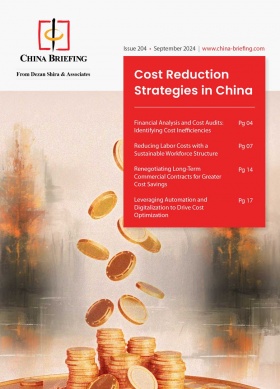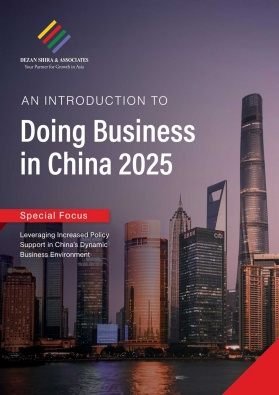China-Chile Economic Ties: Trade, Investment, and Future Prospects
Chile was the first South American country to establish diplomatic relations with China. Over the past 50 years, the relationship between the two countries has developed smoothly. High-level exchanges are frequent, and they maintain good cooperation in international multilateral fields.
In recent years, bilateral economic and trade relations have maintained rapid growth. Currently, China is Chile’s largest global trading partner, the largest export destination, and the largest source of imports. Chile is China’s third-largest trading partner in Latin America and the largest source of copper imports.
Chile’s ambitious carbon neutrality goals, supported by its National Green Hydrogen Strategy and renewable energy advancements, present significant opportunities for Chinese companies to invest in hydrogen energy, wind and solar power, and sustainable mining operations.
Rich in mineral wealth, Chile stands as a cornerstone of global resource production, leading the world in copper reserves, output, and exports, while also ranking as the second-largest producer of lithium carbonate and the sole producer of natural nitrate.
China and Chile established diplomatic relations on December 15, 1970, making the Republic of Chile the first South American country to establish diplomatic relations with the People’s Republic of China, the first country in the Western Hemisphere to sign a bilateral agreement with China under the World Trade Organization framework, and one of the first nations to sign and upgrade a bilateral free trade agreement with China.
Since signing a memorandum of understanding on the Belt and Road Initiative (BRI), Chinese investments in Chile have surged, focusing on large-scale, diversified projects in electricity, telecommunications, and infrastructure. These investments have played a key role in supporting Chile’s post-pandemic economic recovery and job creation.
In December 2024, high-level discussions between Chinese Foreign Minister Wang Yi and Chilean Foreign Minister Alberto van Klaveren reinforced the two nations’ commitment to deepening cooperation. With 2025 marking the 55th anniversary of diplomatic relations, both sides aim to enhance cultural exchanges, expand collaboration across various sectors, and attract further business investments.
Trade between the two nations remains robust. In 2023, bilateral trade volume reached US$56.91 billion, with China maintaining its position as Chile’s largest trading partner, top export market, and leading import source for 12 consecutive years. Chile exported US$37.4 billion worth of goods to China, accounting for 40 percent of its total exports, while imports from China totaled US$19.51 billion. These figures underscore the strong and enduring economic ties between the two countries.
This article closely examines the bilateral trade and investment relationship between China and Chile, exploring potential opportunities for future cooperation and development.
China-Chile bilateral trade
China exports to Chile
From January to September 2024, bilateral goods trade between China and Chile totaled US$45.67 billion, reflecting a 3.9 percent decline compared to the same period in the previous year. During this period, China recorded a trade deficit with Chile, amounting to US$17.67 billion.
China’s Top Exports to Chile, 2023
| Product category | Value (US$) |
| Electrical machinery and equipment | 3.34 billion |
| Nuclear reactors, boilers, and machinery | 2.14 billion |
| Vehicles other than railway or tramway rolling stock | 1.61 billion |
| Articles of apparel and clothing accessories | 1.18 billion |
| Plastics | 972 million |
Source: ITC
What has increased from 2019 to 2023:
- Animal, vegetable, or microbial fats and oils and other cleavage products: 78 percent increase;
- Vehicles other than railway or tramway rolling stock: 24 percent increase;
- Paper and paperboard: 16 percent increase;
- Glass and glassware: 15 percent increase.
Chile exports to China
Chile is a global leader in mineral exports, with mining contributing significantly to its economy. In 2022, mining accounted for 13.6 percent of Chile’s GDP, with related industries pushing the sector’s total contribution to over 30 percent. Mineral exports reached US$56.75 billion, representing 58.2 percent of the country’s total exports. Copper remained the top export, generating US$23.1 billion, a 46.6 percent year-on-year increase.
Chile is also one of the world’s largest lithium producers, holding 52 percent of global reserves, primarily concentrated in the Atacama Salt Flat. In 2022, Chile’s lithium production surged nearly 40 percent, with exports skyrocketing 777 percent to US$7.76 billion, including US$6.02 billion to China. Lithium now ranks among Chile’s top mineral exports, following copper, molybdenum, and iron. Additionally, lithium-related tax revenues contributed US$5 billion, surpassing copper’s fiscal contribution. To capitalize on its strategic lithium resources, Chile launched a National Lithium Strategy in 2023, emphasizing state-led development and public-private partnerships.
Chile’s Top Exports to China, 2023
| Product category | Value (US$) |
| Ores, slag, and ash | 18.84 billion |
| Copper | 7.26 billion |
| Inorganic chemicals, organic or inorganic compounds of precious metals | 5.57 billion |
| Edible fruit and nuts | 2.28 billion |
| Pulp of wood or of other fibrous cellulosic material | 1.78 billion |
Source: ITC
What has increased from 2019 to 2023:
- Live animals: 142 percent increase;
- Inorganic chemicals: 140 percent increase;
- Rubber: 48 percent increase;
- Preparations of vegetables: 25 percent increase.
China-Chile investment
According to the World Investment Report 2024, Chile attracted US$21.03 billion in foreign direct investment (FDI) in 2023, which increased by 19 percent from 2022, bringing its total FDI stock to US$256.06 billion by the end of the year. Data from InvestChile indicates that the United States tops the project portfolio with 135 projects amounting to US$9.9 billion. Canada follows with 24 projects totaling US$5.3 billion, placing China in third with 21 projects valued at US$4.3 billion. Notably, Brazil experienced a significant rise in investment projects, reaching US$2.2 billion across 27 initiatives, positioning it as a key source of FDI and the leading Latin American contributor to the portfolio.
Chile offers a favorable and inclusive investment environment, with policies that equally benefit domestic and foreign enterprises. The country actively encourages investments in agriculture, energy, mining, and infrastructure, where Chinese companies have made significant contributions. Examples include State Grid Corporation’s acquisition of stakes in Chilean power companies and Tianqi Lithium’s investment in SQM. These projects have not only showcased the potential of Sino-Chilean cooperation but have also supported Chile’s economic and social development by creating jobs and fostering innovation.
Chile’s investment incentives focus on remote regions, free trade zones, and research and development (R&D). Under the Remote Areas Law, companies operating in specific regions like Arica and Magallanes can receive partial income tax rebates (10-40 percent) and wage subsidies. Free trade zones in Iquique, Punta Arenas, and Pareña provide exemptions from customs duties, VAT, and income taxes. R&D investments enjoy up to a 35 percent tax rebate under the R&D Tax Incentive Law, with additional subsidies available through CORFO for projects exceeding US$2 million. To further boost innovation, the government offers pre-investment support and integrated development subsidies, reducing financial burdens and promoting technological advancement.
China and Chile continue to deepen bilateral investment and shared opportunities. During an April 2023 delegation led by Shenzhen and Yantian district officials, multiple agreements were signed, advancing partnerships in agriculture, wine, logistics, and biotechnology. Key outcomes included US$1.7 billion in trade deals, such as Shenzhen’s Pagoda Group securing US$1.5 billion in fruit import agreements with top Chilean exporters and Shenzhen companies finalizing a US$20 million wine deal with La Rosa Winery. Shenzhen-based BGI also reached agreements to establish Chile’s first high-throughput sequencing-based clinical oncology center, supporting public health advancements. These initiatives underscore the potential for enhanced collaboration, with Chile’s premium exports finding streamlined access to Chinese markets via Shenzhen’s port and bonded zone facilities. As China advances high-quality growth and Chile continues to diversify trade, these efforts demonstrate the mutual benefits of expanded economic and cultural ties.
China-Chile agreements
China-Chile Free Trade Agreement (FTA)
The China-Chile Free Trade Agreement, signed on November 18, 2005, and effective from October 1, 2006, marked a significant milestone as China’s first FTA with a Latin American country. This agreement facilitated the gradual elimination of tariffs, aiming to cover 97 percent of products over a decade.
In November 2017, both nations signed an upgraded protocol to the FTA, enhancing trade liberalization and expanding tariff exemptions to approximately 98 percent of all items. This strengthened economic partnership has significantly boosted bilateral trade. The FTA has also facilitated the trade of energy products and technologies, contributing to the diversification of traded goods between the two countries.
China-Chile Double Taxation Avoidance Agreement (DTA)
The Double Taxation Avoidance Agreement between China and Chile, signed on May 25, 2015, and effective from January 1, 2017, aims to prevent the double taxation of income earned by residents of both countries. Key Provisions of the Agreement include:
- Taxes covered: The DTA encompasses Chilean taxes under the Income Tax Act and Chinese individual income tax and enterprise income tax.
- Permanent establishment (PE): A PE is established if an enterprise provides services in another country through individuals present for more than 183 days within any 12-month period.
-
- Capital gains: Gains from the sale of shares or rights deriving more than 50 percent of their value from immovable property in the other country, or from shares representing the capital of a company resident in the other country, may be taxed in that other country.
- Elimination of double taxation: Both countries apply the credit method, allowing residents to credit taxes paid in the other country against their domestic tax liability.
- Withholding tax rates:
| Category | Tax Rate | Notes |
|---|---|---|
| Dividends | Maximum of 10% | In Chile, this does not limit the application of the additional tax on dividends (35%), provided the first category tax is fully creditable. |
| Interest | 4% | For interest from loans granted by banks, insurance companies, and other financial institutions. |
| 10% | In other cases. Notably, interest subject to the 10% rate will instead be subject to a 15% rate for the first two years from the date the treaty is effective. | |
| Royalties | 2% | For royalties related to industrial, commercial, or scientific equipment. |
| 10% | For other royalties. | |
China-Chile opportunities
Wine
Chile’s wine industry has grown rapidly since the 1990s, leveraging its favorable Mediterranean climate and exceptional geographical conditions for grape cultivation. The country is now a prominent player in the global wine market, producing notable varieties such as Cabernet Sauvignon, Carmenere, Merlot, and Sauvignon Blanc. In 2022, bottled wine exports reached US$1.556 billion, making wine the second-largest agricultural export for Chile. While traditional export markets include the United States and the United Kingdom, exports to Asian markets, particularly China, have experienced significant growth. By 2022, China accounted for approximately 15 percent of Chile’s bottled wine export value, solidifying its position as Chile’s largest export destination for wine.
The strong demand for Chilean wine in China presents attractive opportunities for Chinese companies to expand in this sector. Chile’s reputation for high-quality wines, coupled with competitive pricing and favorable trade agreements such as the China-Chile Free Trade Agreement, provides a solid foundation for collaboration. Opportunities for development include investment in vineyard operations, joint ventures with Chilean wineries, and leveraging e-commerce platforms to tap into China’s growing middle-class consumer base. Additionally, branding and marketing initiatives tailored to Chinese tastes, as well as expanding the range of premium wines, can further enhance the market potential for Chilean wine in China.
Green and renewable energy
Chile has made significant strides in developing its green and renewable energy sectors, driven by its commitment to achieving carbon neutrality by 2050. Under its Nationally Determined Contribution (NDC), Chile has set ambitious goals, including peaking carbon emissions by 2025, reducing annual CO₂ emissions to 95 million tons by 2030, and achieving net-zero carbon emissions by 2050 through carbon capture and reduction technologies. Achieving these goals will require investments of US$27.3 billion to US$48.6 billion by 2050, demonstrating Chile’s dedication to a sustainable future. A cornerstone of this transition is the National Green Hydrogen Strategy, unveiled in 2020, which positions Chile as a global leader in green hydrogen production. By 2025, the country aims to install 5 GW of electrolysis capacity, with a vision to produce the world’s lowest-cost green hydrogen by 2030 and rank among the top three global exporters by 2040. This strategy anticipates US$200 billion in investments over 20 years and the creation of 100,000 jobs.
Chile’s abundant wind and solar resources, robust infrastructure, and progressive policies make it an attractive destination for Chinese companies seeking opportunities in green and renewable energy. Key collaboration areas include investments in hydrogen energy projects, and leveraging Chile’s advancements to develop scalable green hydrogen solutions. Chinese firms can also explore partnerships in wind and solar power generation and contribute to decarbonizing mining operations through advanced energy technologies. Moreover, the shared goal of sustainable development offers opportunities to establish green supply chains for critical minerals like copper and lithium, catering to the rising demand for low-carbon products globally while aligning with both nations’ sustainability objectives.
Lithium
Chile’s lithium industry is a cornerstone of its economic and strategic development, supported by its vast reserves and government-backed initiatives. The country holds over 52 percent of the world’s lithium reserves, concentrated primarily in the Atacama Salt Flats. With a production capacity that accounts for 30 percent of the global lithium output, Chile has established itself as a leader in lithium production, leveraging its resources for both economic growth and technological advancement. In 2023, the government unveiled a National Lithium Strategy, emphasizing state-led development through public-private partnerships. This approach ensures ecological sustainability, promotes technological innovation, and secures the state’s majority control over critical projects. The creation of a 100 percent state-owned National Lithium Company further underscores the government’s commitment to long-term resource stewardship and equitable growth.
For Chinese companies, Chile’s lithium strategy presents compelling opportunities for collaboration. The push for public-private partnerships offers avenues for Chinese firms to bring their capital, technology, and expertise to joint ventures, particularly in areas like sustainable mining and advanced lithium processing. The focus on hydrogen energy integration and renewable technologies also aligns with China’s strengths in green innovation, creating synergies for deeper collaboration. Additionally, Chile’s emphasis on modernizing its regulatory framework and expanding lithium exploration beyond strategic salt flats ensures a pipeline of future projects. These developments position Chile as a lucrative and stable destination for Chinese investments, catering to the surging global demand for lithium driven by electric vehicles and renewable energy storage solutions.
About Us
China Briefing is one of five regional Asia Briefing publications, supported by Dezan Shira & Associates. For a complimentary subscription to China Briefing’s content products, please click here.
Dezan Shira & Associates assists foreign investors into China and has done so since 1992 through offices in Beijing, Tianjin, Dalian, Qingdao, Shanghai, Hangzhou, Ningbo, Suzhou, Guangzhou, Haikou, Zhongshan, Shenzhen, and Hong Kong. We also have offices in Vietnam, Indonesia, Singapore, United States, Germany, Italy, India, and Dubai (UAE) and partner firms assisting foreign investors in The Philippines, Malaysia, Thailand, Bangladesh, and Australia. For assistance in China, please contact the firm at china@dezshira.com or visit our website at www.dezshira.com.
- Previous Article Cross-Border Data Transfers – New Draft Measures Clarify Personal Information Protection Certification
- Next Article NGO Accounting and Compliance in China: Key Highlights








